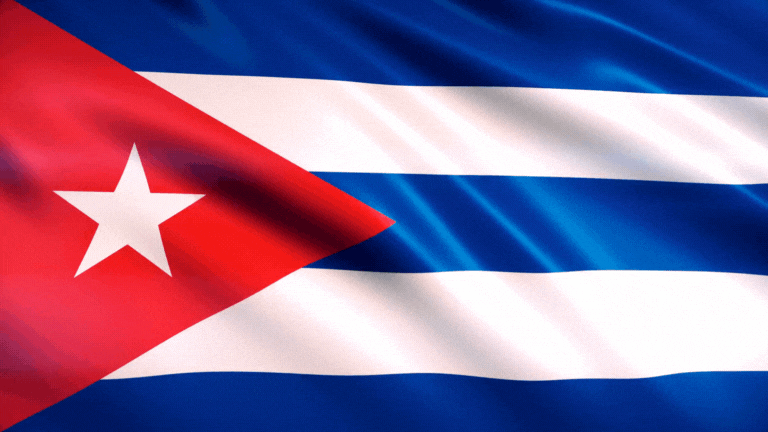Please be aware that this article may contain links to products and services we recommend. If you click on any of these links, we may earn a commission at no extra cost to you. We only endorse products and services that we believe will add value to our readers. Learn more here.
Cuba Flag: History & Symbolism
Hack The Quiz
5/8/20243 min read
This article explores the history and symbolism of the Cuban flag, detailing Cuba’s location in the Caribbean and explaining how the flag’s bold design reflects the country’s independence, strength, and aspirations for freedom.
Where is Cuba?
Cuba is the largest island in the Caribbean, located between the Gulf of Mexico, the Atlantic Ocean, and the Caribbean Sea. It lies to the south of the United States and the Bahamas, and to the east of Mexico’s Yucatán Peninsula. Known for its rich cultural history, Cuba’s landscape includes tropical beaches, mountain ranges, and fertile plains used for agriculture, especially sugarcane and tobacco.
Cuba gained its independence from Spain in 1898 after the Spanish-American War and became an independent republic in 1902. The Cuban flag, adopted in 1902, became a symbol of the country's fight for independence and its resilience.
The History of the Cuba Flag
The Cuban flag was officially adopted on May 20, 1902, the same day Cuba became an independent republic. However, the flag was first designed in 1849 by Narciso López, a Venezuelan revolutionary who wanted to inspire Cuba’s independence movement. López designed the flag in exile while in the United States, combining elements of liberty and unity.
The flag’s design was intended to symbolize the Cuban struggle for independence from Spanish colonial rule. It was first flown during several failed uprisings in the 19th century and became the official symbol of the nation upon achieving independence in 1902.
Today, the Cuban flag stands as a lasting symbol of the country’s ongoing commitment to sovereignty and the enduring spirit of its people.
Breaking Down the Cuba Flag’s Design
The Cuban flag is made up of five horizontal stripes (three blue and two white) with a red equilateral triangle on the left side, inside of which is a single white star. Each part of the flag’s design carries deep symbolism tied to Cuba’s history, ideals, and independence.
Let’s break down the elements of the flag:
The Blue Stripes
The three blue stripes represent the original three military districts of Cuba during its colonial era: Occidente (Western Cuba), Centro (Central Cuba), and Oriente (Eastern Cuba). These districts were important during Cuba’s fight for independence from Spain.
The White Stripes
The two white stripes symbolize the purity and justice of the Cuban people’s patriotic ideals. White reflects the nation’s moral values and its desire for peace and equality.
The Red Triangle
The red triangle represents the blood shed by Cuban revolutionaries during the fight for independence. It also symbolizes the ideals of liberty, equality, and fraternity—principles inspired by the French and American revolutions.
The White Star
The single white star in the center of the red triangle, known as La Estrella Solitaria (The Lone Star), symbolizes Cuba’s independence and sovereignty. It stands as a guiding star for the Cuban people on their journey toward freedom.
Final Thoughts
The Cuban flag is a powerful emblem of the country’s long and arduous fight for independence. Its blue and white stripes reflect the original divisions of the island and the moral strength of the Cuban people, while the red triangle and lone white star represent the sacrifices made for freedom and the nation’s enduring sovereignty.
Since its adoption in 1902, the flag has become a cherished symbol of national pride, flown during national holidays such as Independence Day and during international events. It serves as a reminder of Cuba’s rich history and the resilience of its people as they continue to strive for progress and unity.
Expand your mind ...
Explore trivia that broadens your understanding and knowledge of the world.
WE ARE HERE FOR YOU
JOIN US and hack the quiz
info@hackthequiz.com
© 2024. All rights reserved.



